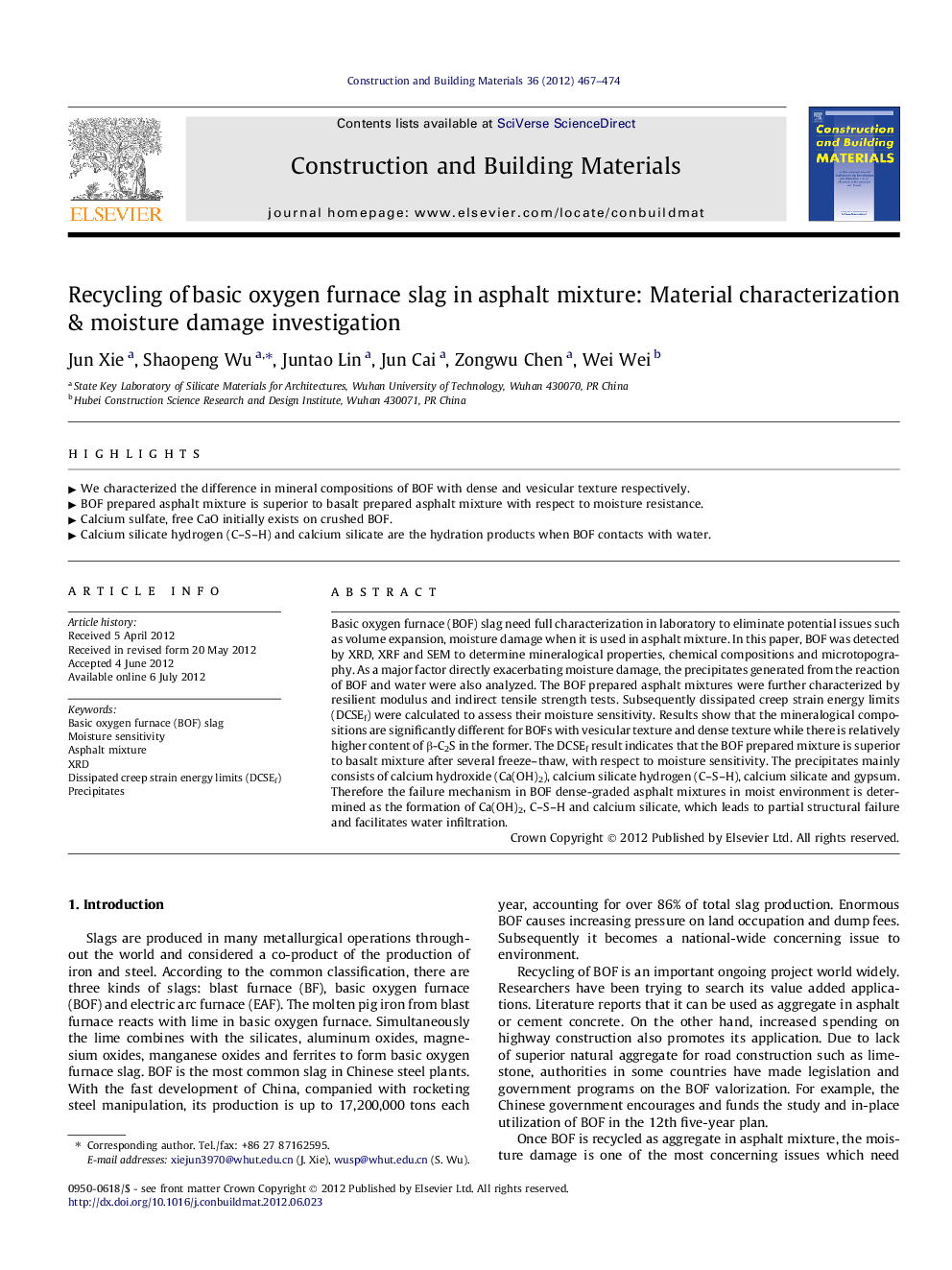| Article ID | Journal | Published Year | Pages | File Type |
|---|---|---|---|---|
| 258642 | Construction and Building Materials | 2012 | 8 Pages |
Basic oxygen furnace (BOF) slag need full characterization in laboratory to eliminate potential issues such as volume expansion, moisture damage when it is used in asphalt mixture. In this paper, BOF was detected by XRD, XRF and SEM to determine mineralogical properties, chemical compositions and microtopography. As a major factor directly exacerbating moisture damage, the precipitates generated from the reaction of BOF and water were also analyzed. The BOF prepared asphalt mixtures were further characterized by resilient modulus and indirect tensile strength tests. Subsequently dissipated creep strain energy limits (DCSEf) were calculated to assess their moisture sensitivity. Results show that the mineralogical compositions are significantly different for BOFs with vesicular texture and dense texture while there is relatively higher content of β-C2S in the former. The DCSEf result indicates that the BOF prepared mixture is superior to basalt mixture after several freeze–thaw, with respect to moisture sensitivity. The precipitates mainly consists of calcium hydroxide (Ca(OH)2), calcium silicate hydrogen (C–S–H), calcium silicate and gypsum. Therefore the failure mechanism in BOF dense-graded asphalt mixtures in moist environment is determined as the formation of Ca(OH)2, C–S–H and calcium silicate, which leads to partial structural failure and facilitates water infiltration.
► We characterized the difference in mineral compositions of BOF with dense and vesicular texture respectively. ► BOF prepared asphalt mixture is superior to basalt prepared asphalt mixture with respect to moisture resistance. ► Calcium sulfate, free CaO initially exists on crushed BOF. ► Calcium silicate hydrogen (C–S–H) and calcium silicate are the hydration products when BOF contacts with water.
